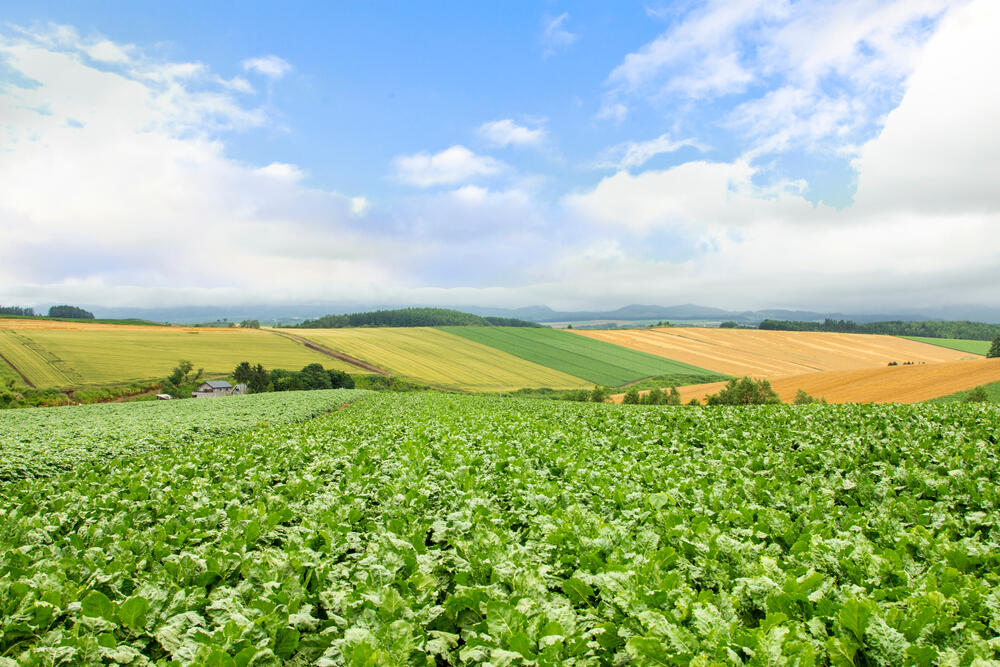Thanks to the variety of fresh ingredients, Hokkaido features a wide variety of exquisite gourmet foods. In the most delicious prefecture rankings, Hokkaido will definitely take the top 3 spots! Soup curry, 'Genghis Khan' barbecued lamb, seafood dishes, dairy products, etc. are all well-known Hokkaido gourmet foods. However, since Hokkaido is the largest prefecture in Japan in term of area, there is a wide variety of local gourmet foods in each area. Therefore, this time we would like to introduce the B-grade gourmet food in each region of Hokkaido.
Nov 24. 2023
【Japanese Gourmet】Affordable "Hokkaido" Local Gourmet Foods Pilgrimage

What is "B-grade gourmet"?
In addition to the popular tourist gourmet that you have to eat, even in the same prefecture, different local gourmets are born depending on the area. B-grade gourmet is a taste that is familiar to the locals cooked with local ingredients without using any splendid techniques or decorations. Namely, they are affordable but still called the gourmet foods.
Strengths of Hokkaido Gourmet

Photo courtesy of: Hokkaido Tourism Organization

Hokkaido is the northernmost administrative area in Japan and has the largest area. The total area of land on the main island is approximately 78,000 square kilometers (not including remote islands). Due to its large size, the natural environment and climate are completely different in each area. Thanks to that, there are a wide variety of agricultural products. Moreover, not only the production volume but also the deliciousness and quality are outstanding as well.
Otaru "Ankake Yakisoba"

Photo courtesy of: Otaru Tourism Association
In Otaru, which has a typical tourist spot called "Unga" (運河, the Otaru Canal), the B-grade gourmet loved by the locals is "Otaru Ankake Yakisoba" (小樽あんかけ焼きそば). It is said that Ankake Yakisoba became widespread in Otaru City in the Showa 30's (1955-1964). The special feature is that a lot of ingredients are added to the slightly hard noodles. In order to protect this beloved local gourmet, the people have formed the "Otaru Ankake Yakisoba Shineitai" (小樽あんかけ焼きそば親衛隊- the Otaru Ankake Yakisoba Guards) in the local area and often appeal its deliciousness to many people.
Tomakomai "Sakhalin surf clam"

In Tomakomai City, which has the largest catch of Sakhalin surf clams in Japan, Sakhalin surf clams or locally called 'Hokki-Gai' (ホッキ貝) are an indispensable ingredient for locals' dining tables. Among them, "Hokki-Gai curry" (ホッキ貝カレー) and "rice cooked with Hokki-Gai" (ホッキ貝の炊き込みごはん) are standard home-cooked dishes. In recent years, Tomakomai City has continued to devise new Sakhalin surf clam dishes. For example, "Tomakomai Hokki-Gai Yakisoba" (苫小牧ホッキ貝やきそば) invented in 2015 is so popular that it suddenly becomes a new specialty gourmet.
Muroran "Muroran Curry Ramen"

Photo courtesy of: Muroran City
For everyone who has eaten curry udon before, do you know "curry ramen"? Unlike other B-grade gourmets, "Muroran Curry Ramen" (室蘭カレーラーメン), which has a history of more than 30 years, is loosely defined as "There is no particular definition of curry ramen, just having the taste the curry is enough". Thanks to that, each variety's unique taste and cooking method was born. Locally, this curry ramen with wide and numerous varieties is regarded as a representative ramen in Hokkaido, listed alongside the Sapporo Miso Ramen, Hakodate Shio (Salted) Ramen, and Asahikawa Shoyu (Soy Sauce) Ramen.
Muroran "Muroran Yakitori"

Photo courtesy of: Muroran City
"Muroran Yakitori" (室蘭やきとり - Muroran Skewered Meat) is Muroran's old-fashioned B-grade gourmet. Muroran Yakitori was born in the early Showa period (around 1937), and although the name contains "tori" which means chicken in Japanese, the actually used meat is "pork". Also, the other ingredient that was put on the skewer along with the pork is not the green onion (Japanese leek), but the onions itself. The onions native to Hokkaido are very cheap and go great with pork. Therefore, it suddenly became Muroran's famous B-grade gourmet.
Asahikawa "Asahikawa Shoyu Horumen"

Photo courtesy of: Asahikawa City Tourism Division
Asahikawa City used to have a thriving pig farming industry, which gave birth to a local offal (known as ホルモン / Horumon) food culture, and there are also many enthusiastic offal fans. For example, Shio-horumon (塩ホルモン - salted offal) is a type of grilled offal that originated in Asahikawa. Among them, the most special is the noodle dish called "Asahikawa Shoyu Horumen" (旭川しょうゆホルメン - Asahikawa Soy Sauce Offal Ramen). The ingredients of Asahikawa soy sauce ramen are not only menma and roast pork that everyone is familiar with, but also stir-fried offal. This is a dish that can only be made in a region that is delighted by offal.
Asahikawa "Geso-don"

Photo courtesy of: Asahikawa City Tourism Division
The squid legs are coated with potato starch and carefully fried in a frying pan, placed on top of hot white rice, then topped with sauce to complete the Geso-don (ゲソ丼 - Squid Legs Rice Bowl). The origin of Geso-don is said to have begun in 1981, when the manager of "Standing Eating Soba Tenyu" (立ち食いそば天勇) made tempura from leftover squid legs at sister restaurant "Sushiya Tenyu" (寿司屋 天勇) and served it to customers.
Furano "Furano Omelette Curry"

Photo courtesy of: Hokkaido Furano City Office Commerce and Tourism Division
At first glance, it doesn't look like it's that complicated to make, but in order to put "Furano Omelet Curry" (富良野オムカレー) on the menu, it has to meet a few conditions. For example, ingredients such as rice, vegetables, eggs, meat, and pickles must be made in Furano! In addition, the milk brand used is limited to "Furano Milk" only. Furthermore, the price of omelet rice should not exceed 1,100 yen (excluding tax). In this way, when all the conditions are met, the omelet rice with the flag placed in the middle is the authentic "Furano Omelet Curry."
Nemuro "escalope"

Photo courtesy of: Hokkaido Tourism Organization
"Escalope" (エスカロップ), which originated in Nemuro, is a local gourmet dish of ketchup rice or butter rice topped with pork cutlet (tonkatsu) and dressed with domiglace sauce. Its name comes from the French word "escalope", which means "thin slice of meat". In order to shorten the cooking time, Nemuro "escalope" pork cutlets are said to be thinner than regular pork cutlets. Also, depending on the type of rice, it is divided into “red esca” (赤エスカ / aka-esuka) and “white esca” (白エスカ / shiro-esuka). At the time of its birth, the ketchup rice “red esca” was popular, but now “white esca” is overwhelmingly winning.
Kushiro "Spa-Katsu"

Kushiro's comfort food, "Spa-Katsu" (スパカツ / Supakatsu - spaghetti & pork cutlet on iron plate pan), is quite common in local restaurants. Speaking of its origin, it is said that in the 1950s Kushiro City, western food culture was not yet widespread, but the restaurant "Izumiya" (泉屋) in Kushiro City devised "Spa-Katsu" so that customers could enjoy piping hot to the last bite.
Kushiro "Sanmanma"

“Sanmanma” (さんまんま) is a charcoal-grilled dish of saury (called Sanma さんま in Japanese) that has been slowly marinated in a sauce, placed on top of mixed rice. During the charcoal grilling, the fragrant fat of the saury soaks into the rice, making it a Kushiro specialty that condenses the deliciousness of the saury.
Abashiri "Abashiri Moyoro Nabe"

Photo courtesy of: Hokkaido Tourism Organization
“Abashiri Moyoro Nabe” (網走モヨロ鍋) is a local hot pot dish with plenty of seafood, including Okhotsk salmon. The name "Moyoro" comes from the "Moyoro Shell Mound" (モヨロ貝塚), a local Okhotsk cultural relic. In addition, "Abashiri Moyoro Nabe" is particular about not only the local ingredients and soup stock of Abashiri, but also the specified pot must be used. Moreover, the theme of the food should also be something that let the consumers get an image of the mysterious Okhotsk culture.
Kitami "Shio Yakisoba"

Photo courtesy of: Kitami City Tourism Promotion Division
In Kitami City, which produces the largest amount of onions in Japan, "Shio Yakisoba" (塩やきそば - Salt Yakisoba) was born using local onions and various seafood. Unlike sauce-flavored yakisoba that you can find anywhere, Kitami Shio Yakisoba's decisive flavor is salt, and scallops from Okhotsk are the standard. And the most important thing is the scallop soup called "magic water" (魔法の水 / maho no mizu). The moment you put it on, you can enjoy the visual impact, and the taste is even better!
Hokkaido Zangi

"Zangi" (ザンギ), which is sold everywhere, is a traditional home-cooked dish in Hokkaido. The chicken is thoroughly seasoned before frying, but what important is not how to fry it, but how to season it. The method depends on each store and home, so it can be said to be the typical "Ofukuro no Aji" (おふくろの味 - taste of mom's home cooking) of Hokkaido.
Ageimo

Photo courtesy of: Hokkaido Tourism Organization
In Hokkaido, the number one potato producing area in Japan, "Ageimo" (あげいも - fried potato) which is not just a snack but also the super popular B-grade gourmet was born. Put the peeled and boiled potatoes in the batter and fry until they become golden brown-colored round shaped. It will take several hours to arrive at "Nakayama Pass" (中山峠 / Nakayama Toge), the birthplace of the Ageimo. Therefore, the food born to fill the hunger of travelers on this empty pass was this "Ageimo". Now it's a Hokkaido specialty that you have to eat when you come to Nakayama Pass.
Contents Source
This information is sourced by Fun Japan Communications Co., Ltd.
There may be business closures, changes to hours of operation,
or temporary suspension of the service of alcoholic beverages, etc.,
implemented without prior notice.
For details, please check the official websites or inquire with the
establishments directly.


